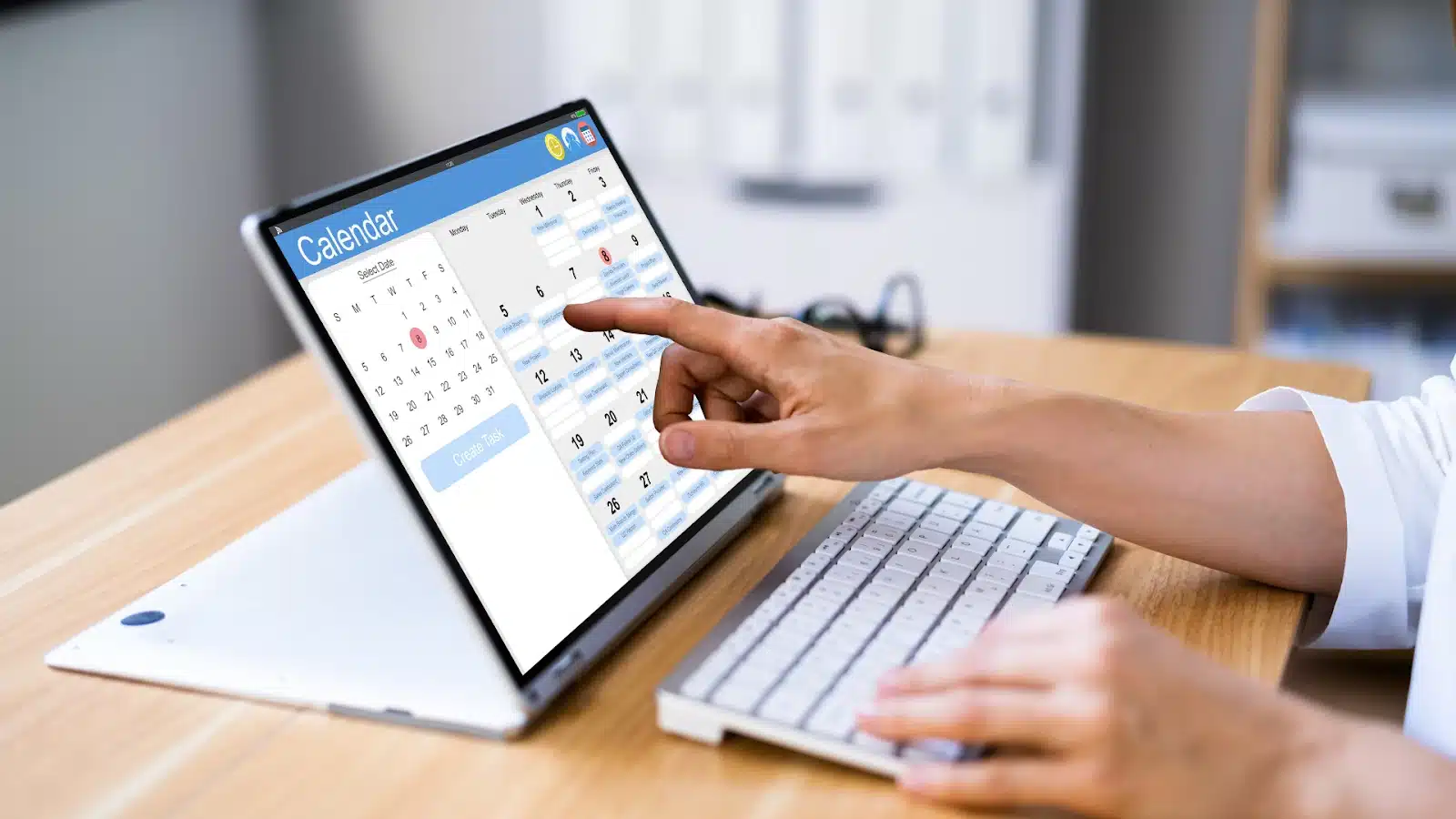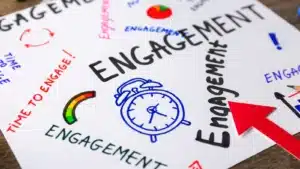
Create Meeting Agendas That Encourage Questions and Input
Creating effective meeting agendas is crucial for fostering engagement and ensuring that every participant has the opportunity to contribute. A well-structured agenda not only outlines the topics to be discussed but also sets the tone for a collaborative environment. This article will explore strategies for creating meeting agendas that encourage questions and input, transforming passive attendees into active participants.
The Importance of an Engaging Agenda
An engaging agenda serves as the backbone of any successful meeting. It guides the discussion, keeps participants focused, and ensures that all necessary topics are covered. However, an agenda should do more than just list items; it should invite participation and foster a sense of ownership among attendees.
When participants feel that their input is valued, they are more likely to engage in meaningful discussions. This can lead to better decision-making, increased creativity, and a stronger team dynamic. By designing agendas that encourage questions and input, organizations can harness the collective intelligence of their teams.
Setting Clear Objectives
Before drafting an agenda, it is essential to define the meeting’s objectives. What is the purpose of the meeting? Are you seeking to brainstorm ideas, solve a problem, or make a decision? Clear objectives help shape the agenda and provide a framework for discussion.
For instance, if the goal is to generate new ideas, the agenda should include dedicated time for brainstorming and open discussion. Alternatively, if the meeting is focused on decision-making, it should outline the criteria for evaluation and include time for questions and clarifications. Additionally, sharing these objectives with participants ahead of time can prepare them for the discussion, allowing them to come equipped with relevant insights and suggestions that align with the meeting’s goals.
Incorporating Interactive Elements
To encourage questions and input, consider incorporating interactive elements into the agenda. This could include breakout sessions, polls, or Q&A segments. For example, dedicating time for participants to share their thoughts on specific topics can create a more dynamic atmosphere.
Utilizing PresEngage can further enhance interactivity. With AI-powered Q&A and SMS engagement, attendees can ask questions in real-time without the need for apps or downloads. This frictionless participation allows everyone to contribute, regardless of their comfort level with speaking up in a group setting. Moreover, incorporating visual aids such as slides or infographics can help convey complex information more effectively, making it easier for participants to engage with the material and contribute to discussions. By making the agenda not only a roadmap but also a platform for collaboration, you can transform a standard meeting into a vibrant exchange of ideas.
Structuring the Agenda for Maximum Engagement
The structure of the agenda plays a significant role in determining how engaged participants will be. A well-organized agenda not only outlines topics but also provides a roadmap for discussion. Here are some tips for structuring an engaging agenda:
Prioritize Key Topics
Start by listing the most critical topics at the top of the agenda. This ensures that essential discussions take place while participants are still fresh and engaged. By prioritizing key topics, you can also allocate more time for in-depth discussions and questions.
For example, if a major decision needs to be made, it should be addressed early in the meeting. This approach allows for ample time to explore different perspectives and gather input from all participants, ultimately leading to a more informed decision.
Moreover, consider the impact of the order in which topics are presented. Starting with a high-energy topic can set a positive tone for the meeting, while ending with a lighter subject can leave participants feeling satisfied and engaged. This strategic sequencing can enhance the overall flow and maintain momentum throughout the meeting.
Allocate Time for Discussion
Each agenda item should have a designated time slot for discussion. This not only keeps the meeting on track but also signals to participants that their input is valued. When attendees know that there is time set aside for questions and comments, they are more likely to engage actively.
Consider including a “Questions and Input” segment at the end of each agenda item. This encourages participants to share their thoughts immediately after discussing a topic, ensuring that questions are fresh in their minds.
In addition, using visual aids such as timers or progress indicators can help participants stay aware of the time allocated for each topic. This transparency fosters a sense of accountability and encourages everyone to contribute succinctly, making the discussion more dynamic and focused.
Encourage Pre-Meeting Input
To foster a culture of engagement, consider soliciting input from participants before the meeting. This could be done through a brief survey or an email asking for topics they would like to discuss. By incorporating their suggestions into the agenda, attendees will feel more invested in the meeting and are likely to contribute more actively.
Additionally, sharing the agenda in advance allows participants to prepare their thoughts and questions, leading to more productive discussions during the meeting itself.
Furthermore, you might consider creating a shared document where participants can add their topics or questions in real-time, leading up to the meeting. This collaborative approach not only empowers attendees but also fosters a sense of community and shared ownership over the meeting’s outcomes. By engaging participants in this way, you can significantly enhance their commitment to the agenda and the discussions that follow.
Creating a Safe Space for Questions
One of the biggest barriers to engagement in meetings is the fear of judgment. To encourage questions and input, it is essential to create a safe space where participants feel comfortable sharing their thoughts. Here are some strategies to foster this environment:
Establish Ground Rules
At the beginning of the meeting, establish ground rules that promote respect and open communication. Encourage participants to listen actively, refrain from interrupting, and value each other’s contributions. By setting these expectations, attendees will feel more at ease when expressing their ideas and asking questions.
Additionally, remind participants that there are no “stupid” questions. Emphasizing that every question is valid can help reduce anxiety and encourage more open dialogue. This approach not only fosters a supportive atmosphere but also stimulates critical thinking, as individuals begin to explore topics more deeply without the fear of being judged for their inquiries.
Lead by Example
As the meeting facilitator, leading by example is crucial. Demonstrating vulnerability by sharing your own questions or uncertainties can encourage others to do the same. When participants see that it is acceptable to ask for clarification or share their thoughts, they are more likely to engage actively.
Moreover, acknowledging and appreciating contributions from all participants can reinforce a culture of respect and support. Simple affirmations can go a long way in making attendees feel valued and heard. Consider using techniques such as paraphrasing what someone has said to show understanding or inviting quieter members to share their perspectives, which can further enhance the sense of belonging and participation.
In addition to verbal affirmations, utilizing visual aids or collaborative tools during the meeting can help participants express their thoughts more freely. For instance, using sticky notes or digital platforms for brainstorming can allow individuals to contribute ideas anonymously, which may encourage those who are typically hesitant to speak up. This not only diversifies the input received but also empowers participants to take ownership of their contributions, reinforcing the idea that every voice matters in the discussion.
Utilizing Technology for Enhanced Engagement
In today’s digital age, leveraging technology can significantly enhance audience engagement during meetings. PresEngage offers innovative solutions that transform traditional presentations into interactive experiences. Here’s how technology can support engagement:
Real-Time Q&A
With AI-powered real-time Q&A, participants can ask questions and receive instant answers based on the presentation content. This not only keeps the discussion flowing but also ensures that no questions go unanswered. By integrating such technology into meetings, presenters can focus on delivering their message while the AI handles audience inquiries.
Moreover, the ability to capture audience questions and contact information allows for seamless follow-up after the meeting, turning engagement into actionable opportunities. This can be particularly beneficial for sales teams and marketers, who can tailor their follow-up strategies based on the specific interests and inquiries raised during the session. By analyzing the data collected, organizations can refine their messaging and better meet the needs of their audience, ultimately leading to improved outcomes.
Anonymous Participation
For those who may feel uncomfortable speaking up in a group setting, anonymous participation can be a game-changer. By allowing attendees to submit questions or comments anonymously via SMS, organizations can encourage input from even the most reserved participants. This approach can lead to a richer discussion and a more diverse range of perspectives.
Furthermore, the anonymity can help address sensitive topics that attendees may hesitate to discuss openly, fostering a more inclusive environment. This is particularly relevant in discussions surrounding workplace culture, diversity, and inclusion, where individuals might have differing opinions or experiences. By creating a safe space for anonymous feedback, organizations can gain invaluable insights that might otherwise remain unvoiced, helping to shape policies and initiatives that resonate with their workforce. Additionally, the data gathered can be used to identify trends and areas for improvement, ensuring that the organization remains responsive to the needs of its employees.
Measuring Engagement and Adjusting Strategies
After implementing strategies to encourage questions and input, it is essential to measure engagement and assess the effectiveness of the agenda. This can be done through feedback surveys or analytics tools that track participation metrics. By analyzing these metrics, organizations can identify trends over time, allowing them to understand not just immediate reactions but also long-term engagement patterns. This holistic view can be crucial in determining which strategies resonate most with participants and which may need reevaluation.
Gathering Feedback
After the meeting, solicit feedback from participants regarding the agenda and overall engagement. Ask questions about what worked well and what could be improved. This feedback is invaluable for refining future agendas and ensuring that they continue to foster participation. Consider utilizing a mix of quantitative and qualitative feedback tools, such as rating scales alongside open-ended questions, to capture a comprehensive view of participant sentiments.
Additionally, consider conducting follow-up interviews or focus groups to gain deeper insights into attendees’ experiences. Understanding their perspectives can help tailor future meetings to better meet their needs. Engaging with participants in this way not only provides rich qualitative data but also strengthens relationships, as attendees feel their voices are heard and valued. This can lead to increased loyalty and willingness to engage in future discussions.
Adjusting Strategies Based on Insights
Using the feedback gathered, make necessary adjustments to the agenda and engagement strategies. If certain topics consistently elicit more questions, consider allocating more time for those discussions in future meetings. Conversely, if certain segments are less engaging, explore alternative approaches to invigorate those discussions. This might include incorporating interactive elements such as polls or breakout sessions that encourage more dynamic participation, thereby transforming passive listeners into active contributors.
By continuously refining the agenda based on participant feedback, organizations can create a culture of engagement that evolves over time, ensuring that every meeting is productive and collaborative. Moreover, embracing a flexible approach allows teams to stay responsive to changing dynamics and participant needs, fostering an environment where creativity and innovation can flourish. This adaptability not only enhances the quality of discussions but also empowers participants to take ownership of their contributions, leading to richer, more meaningful exchanges during meetings.
The Key to Dynamic Meetings
Creating meeting agendas that encourage questions and input is essential for fostering a collaborative environment. By setting clear objectives, structuring the agenda thoughtfully, and utilizing technology, organizations can transform passive meetings into dynamic discussions. Establishing a safe space for questions and gathering feedback further enhances engagement, leading to more productive outcomes.

Ultimately, the goal is to empower every participant to contribute their insights and ideas, turning meetings into valuable opportunities for collaboration and growth. With the right strategies in place, every meeting can become an engaging experience that drives action and results.
Unlock Interactive Meetings with PresEngage
Ready to elevate your meeting agendas and engage your audience like never before? PresEngage is here to revolutionize your presentations with our AI-powered SMS Q&A platform. Say goodbye to the hurdles of microphone anxiety and technical glitches, and hello to seamless, real-time interaction that keeps every participant involved. Whether you’re a presenter, educator, trainer, or business professional, PresEngage is designed to ensure your audience’s questions never go unanswered. Start for FREE today and experience the power of truly interactive, high-conversion conversations with PresEngage.
Present Smarter. Engage Answer Convert Close Remarkably.
Dazzle your audience with Real-Time Q&A powered by your AI Co-Presenter.(Patent Pending)
PresEngage™ makes you look brilliant by connecting with everyone, instantly.
No Credit Card Required. 100% Risk Free.
Frictionless Audience Experience GUARANTEED.






